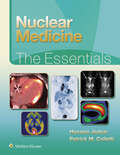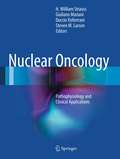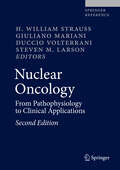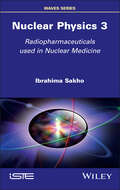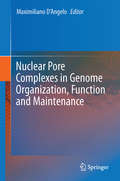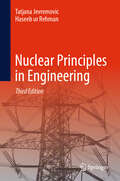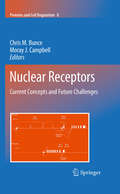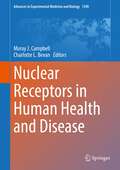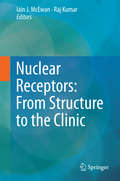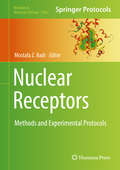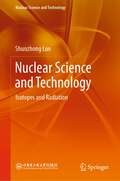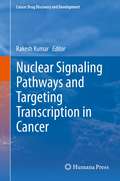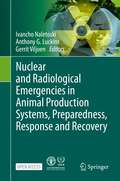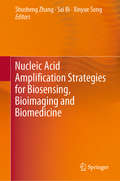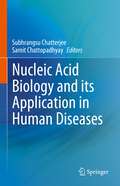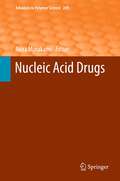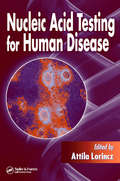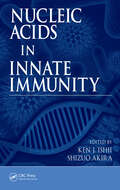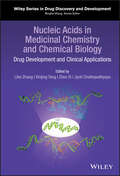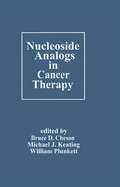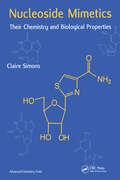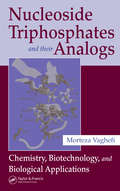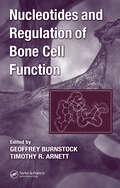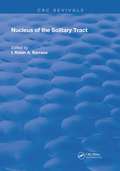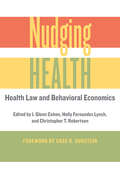- Table View
- List View
Nuclear Medicine: The Essentials
by Hossein Jadvar Patrick M. CollettiPerfect for residents and fellows to use during rotations, or as a quick review for practicing radiologists and nuclear medicine physicians, Nuclear Medicine: The Essentials is a complete, concise overview of the most important knowledge in this challenging and evolving field. Each chapter begins with learning objectives and ends with board-style questions that help you focus your learning. A self-assessment examination in print and additional self-assessment material online test your mastery of the content and prepare you for exams.
Nuclear Oncology
by Duccio Volterrani H. William Strauss Giuliano Mariani Steven M. LarsonThis book provides the reader with a comprehensive understanding of both the basic principles and the clinical applications of nuclear oncology imaging techniques. The authors have assembled a distinguished group of leaders in the field who provide valuable insight on the subject. The book also includes major chapters on the cancer patient and the pathophysiology of abnormal tissue, the evaluation of co-existing disease, and the diagnosis and therapy of specific tumors using functional imaging studies. Each chapter is heavily illustrated to assist the reader in understanding the clinical role of nuclear oncology in cancer disease therapy and management.
Nuclear Oncology
by Duccio Volterrani H. William Strauss Giuliano Mariani Steven M. LarsonThis book discusses the role of nuclear medicine in the diagnosis, staging, and treatment of patients with specific cancers. It presents the incidence, pathophysiologic and clinical aspects of the disease, the use of nuclear imaging in diagnosis, staging requirements, management of specific tumors, and surveillance after primary treatment of cancers. It addresses the various diagnostic/therapeutic options that are currently available or are most likely to become available in the near future according to a prioritized approach, thereby keeping to a minimum the number of diagnostic imaging procedures the patient is expected to undergo. Topics include basic science, clinical applications, radionuclide therapy, radioguided surgery, heart disease in the cancer patient, and adverse effects of cancer therapy. Each clinical chapter discusses the radionuclide procedures within an integrated framework, thereby identifying the information required for effective treatment of specific tumors. The book concludes with a series of cases that define and expand the didactic material in the clinical application chapters. Thoroughly updated and revised, the second edition incorporates advances in imaging and therapy and features the current staging guidelines of the American Joint Committee on Cancer. With contributions from a group of internationally distinguished practitione rs, Nuclear Oncology: From Pathophysiology to Clinical Applications, Second Edition, is a valuable reference for nuclear medicine physicians, radiologists, medical and surgical oncologists, and other clinicians involved in the care and management of cancer patients.
Nuclear Physics 3: Radiopharmaceuticals Used in Nuclear Medicine (ISTE Invoiced)
by Ibrahima SakhoNuclear Physics 3 presents the applications of various radioisotopes in nuclear medicine, with a focus on radiological imaging methods such as X-rays, γ scintigraphy – PET – MRI and ultrasound, which do not exploit the properties of radiopharmaceuticals. The book then presents the physicochemical and pharmacological properties of radiopharmaceuticals labeled with 99mTc, 201Tl, 18mKr, 18F and the radioisotopes 123I, 125I and 131I used in nuclear medicine. The production chains for the radiotracers studied, as well as their main emissions, are then described in detail, followed by a study of the clearance mechanisms of the radiopharmaceuticals under consideration. Finally, the book describes the principles of myocardial, pulmonary, bone, thyroid, renal and gastric emptying scans using the properties of the radiotracers studied, as well as the principles of prostate brachytherapy using iodine-125 implants and prostate chemotherapy.
Nuclear Pore Complexes in Genome Organization, Function and Maintenance
by Maximiliano D’AngeloThe three-dimensional organization of the DNA inside the eukaryotic cell nucleus has emerged a critical regulator of genome integrity and function. Increasing evidence indicates that nuclear pore complexes (NPCs), the large protein channels that connect the nucleus to the cytoplasm, play a critical role in the establishment and maintenance of chromatin organization and in the regulation of gene activity. These findings, which oppose the traditional view of NPCs as channels with only one: the facilitation of nucleocytoplasmic molecule exchange, have completely transformed our understanding of these structures. This book describes our current knowledge of the role of NPCs in genome organization and gene expression regulation. It starts by providing an overview of the different compartments and structures of the nucleus and how they contribute to organizing the genome, then moves to examine the direct roles of NPCs and their components in gene expression regulation in different organisms, and ends by describing the function of nuclear pores in the infection and genome integration of HIV, in DNA repair and telomere maintenance, and in the regulation of chromosome segregation and mitosis. This book provides an intellectual backdrop for anyone interested in understanding how the gatekeepers of the nucleus contribute to safeguarding the integrity and function of the eukaryotic genome.
Nuclear Principles in Engineering
by Tatjana Jevremovic Haseeb ur RehmanSeveral emerging application areas are driving a revival in nuclear engineering, including new nuclear reactor designs (advanced water-cooled reactors, small modular reactors, and microreactors) and their various applications beyond electricity production and a revolution in nuclear medicine, nuclear space exploration, hydrogen production, and homeland security. This fully updated introductory textbook provides students and practitioners with the fundamentals of nuclear principles in engineering for a thorough understanding of physical processes relating to neutron physics, nuclear structures, and radiation interactions. To comprehend physical phenomena, hands-on computational exercises supported by mathematical details and real-life examples are provided to communicate the nuclear principles concepts. A new chapter details the evolution of nuclear power plants, explaining the modern-day technologies based on design details linked to the basic principles of nuclear engineering. In addition, every chapter is supplied with the problems solutions and answers. Nuclear Principles in Engineering, Third Edition, is written for students, engineers, physicists, and scientists who need up-to-date information on basic nuclear concepts and calculation methods, and will serve as an invaluable resource for training programs in the nuclear sector.
Nuclear Receptors
by Moray J. Campbell Chris M. BunceIn 1890 a case of myxedema was treated in Lisbon by the implantation of a sheep thyroid gland with the immediate improvement in the patient's condition. A few years later, medications for the then ill-explained condition of the menopause included tablets made from cow ovaries. In the first quarter of the 20th century the identification of vitamin D, and its sunlight driven production in skin, paved the way to the elimination of rickets as a major medical problem. Twenty years or so later, Sir Vincent Wigglesworth established the endocrine basis of developmental moulting in insects, arguably the most commonly performed animal behaviour on Planet Earth. A paradigm that would unify these disparate observations arose between 1985 and 1987 beginning with the identification of the glucocorticoid receptor and the nuclear receptor super-family. What follows is a timely and positive manifestation of the capacity, productivity and value of international human scientific endeavour. Based on intrigue, lively competition and cooperation a global effort has rapidly fostered a school of biology with widespread ramifications for the understanding of metazoan animals, the human condition and the state of the planet. This book is the first this century to try and capture the spirit of this endeavour, to depict where the field is now and to identify some of the challenges and opportunities for the future.
Nuclear Receptors in Human Health and Disease (Advances in Experimental Medicine and Biology #1390)
by Moray J. Campbell Charlotte L. BevanThis book addresses and dissects the roles and crosstalk mechanisms for the 48 human nuclear receptors (NR) in human health and disease. After a State-of-the-Art introduction by an undisputed and celebrated field leader to provide an overview of the field and its significance, chapters are organized into six sections. The first three sections discuss NR roles in Reproduction & Development, Metabolism and Central Systems. These present to the reader our current understanding of NR signaling in the development and functioning of the reproductive system; the roles in the regulation of energy metabolism; and how NR signaling is more widely integrated into systemic functions from calcium flux to circadian rhythm. The subsequent three sections dissect how aberrant NR functions drive Cancer; how new insights into Genomic Interaction are helping to reveal how NR disruption drives disease; and finally, how Translational Efforts are exploiting this understanding from developing novel NR ligands to establishing how underlying genetic variation impacts NR function. Within these sections the chapters also illustrate emerging understanding of how the epigenome and non-coding genome combine to regulate NR function and impact dysfunction. Increasingly these insights cross-fertilize over cell and disease boundaries and it is unsurprising that NR are being explored in novel and new arenas such as the context of neurological disorders and depression. Thus, there is wide scope for re-purposing of licensed drugs and development of new NR-targeting therapies for a host of conditions and diseases. This unique book brings together many of the leading figures in NR research from across the globe, to discuss emerging roles and their implications for human health and disease. It summarizes the state of the art and shows signposts for future research to further shape this influential field.
Nuclear Receptors: From Structure to the Clinic
by Iain J. Mcewan Raj KumarNuclear Receptors focuses on the structural analysis of nuclear receptors from the initial work using isolated protein domains to the more recent exciting developments investigating the conformational shape of full-length receptor complexes. The book also reviews the structure of key nuclear receptor co-regulatory proteins. It brings together, for the first time, a comprehensive review of nuclear receptor structure and the importance of receptor conformation underpinning allosteric regulation by different ligands (hormone, drugs, DNA response elements, protein-protein interactions) and receptor activity. The nuclear receptor superfamily, including receptors for steroid hormones and non-steroid ligands, are pivotal to normal physiology, regulating processes as diverse as reproduction, metabolism, the immune system and brain development. The first members of the family were cloned over 25 years ago, which heralded in the idea of a superfamily of intracellular receptor proteins that bound small molecule ligands: classical steroid hormones, vitamins, fatty acids and other products of metabolism. These signals are then transmitted through multiprotein receptor-DNA complexes, leading to the regulation of target genes, often in a cell-selective manner. The cloning of the receptor cDNAs also ushered in an era of unparalleled analysis of the mechanisms of action of these ligand-activated transcription factors.
Nuclear Receptors: Methods and Experimental Protocols (Methods in Molecular Biology #1966)
by Mostafa Z. BadrThis volume presents valuable techniques for studying the class of ligand-activated transcription factors known as nuclear receptors. After a brief overview of the history of the field, chapters cover methods to detect the receptors and their mRNAs in various tissues, protocols to characterize nuclear receptor modulators and activities, their signaling and roles in certain pathogenesis, molecular modeling of nuclear receptor-ligand interactions, as well as the utility of informatics in the field of nuclear receptors. Written in the highly successful Methods in Molecular Biology series format, chapters include introductions to their respective topics, lists of the necessary materials and reagents, step-by-step, readily reproducible laboratory protocols, and tips on troubleshooting and avoiding known pitfalls. Authoritative and cutting-edge, Nuclear Receptors: Methods and Experimental Protocols seeks to aid researchers working toward furthering our understanding of these vital receptors and their role in numerous pathological conditions.
Nuclear Science and Technology: Isotopes and Radiation (Nuclear Science and Technology)
by Shunzhong LuoThis textbook highlights the fundamentals, applications and research frontiers of the civil-use non-power nuclear technology, especially the radioisotopes and radiation technology. The wide scope of applications and the active research in the subject field calls for a comprehensive textbook that not only explains the basic principles but also links the fundamentals to the various application fields. The book systematically leads students from isotope preparation, to nuclear analysis, and to the civil applications in areas such as chemical engineering, agriculture, medicine, environmental protection and materials modification. The application in the energy field is briefly introduced. The book can be used as good teaching materials for upper undergraduate and graduate students in nuclear science and technology. It is also a handy reference book for researchers and engineers in the above mentioned fields.
Nuclear Signaling Pathways and Targeting Transcription in Cancer
by Rakesh KumarAt the moment, there is no dedicated book to summarize the roles, the significance, and potential therapeutic targeting of transcriptional factors from the perspective of signaling cascade, and thus, directly impacting the functionality of transcriptional factors in cancer. In addition, this book will offer a comprehensive basic and clinical science behind the functions of representative core transcriptional factors. These chapters will serve as a treasure for all those who have an interest in the basis, progression, and targeting of human cancer. Each chapter will be intended to provide comprehensive, up-to-date information by the leaders about the physiologic and pathologic roles of TFs in specific representative organ systems of prime importance. The book will consist of chapters that will give biomedical students, under and graduate students, basic sciences and clinical cancer fellows, residents and researchers, and oncology educators will get a thorough summary of the overall subject. The readers will be able to understand the important current information and views on specific TFs and its role in cancer in areas outside their own expertise or experience. A special emphasis will be also placed on the "classic" papers as well as perspectives on future directions for the field.
Nuclear and Radiological Emergencies in Animal Production Systems, Preparedness, Response and Recovery
by Gerrit Viljoen Ivancho Naletoski Anthony G. LuckinsThis Open Access volume explains how major nuclear and radiological emergencies (NREs) can have implications at local, national and international level. The response to NREs requires a competent decision-making structure, clear communication and effective information exchange. National veterinary services have the responsibility to plan, design and manage animal production system in their countries. These activities cover animal health, animal movement control, production control and improvement, and control of the products of animal origin before their placement on the market. Release of radionuclides after NREs can cause substantial contamination in the animal production systems. Critical responsibility of veterinary authorities is therefore to prevent such contamination, establish early response mechanisms to mitigate the consequences and prevent placement of contaminated products of animal origin on the market for human consumption. This work summarizes the critical technical points for effective management of NREs for national veterinary services.
Nucleic Acid Amplification Strategies for Biosensing, Bioimaging and Biomedicine
by Shusheng Zhang Sai Bi Xinyue SongThis book describes the rational design, development and application of nucleic acid amplification strategies for biosensing, bioimaging and biomedicine. It consists of fifteen chapters demonstrating the use of these strategies in various areas, including fluorescence techniques, Chemiluminescence biosensors, electrochemiluminescence biosensors, colorimetric assays, surface plasmon resonance technologies, electrochemical DNA sensors, photoelectrochemical biosensor, nanopore sensors, quartz crystal microbalance, fluorescence imaging, surface-enhanced Raman spectroscopy, in vitro and in vivo metal ions detection, theranostics and microdroplet chips. Offering a collection of reviews illustrating the latest advances in biochemical analysis and therapeutics, the book shares valuable insights into current challenges and future prospects, making it a valuable resource for a wide readership in the various fields of biosensing, bioimaging and biomedicine.
Nucleic Acid Biology and its Application in Human Diseases
by Subhrangsu Chatterjee Samit ChattopadhyayThis book reviews the structure-function relationship of nucleic acids, their role in the pathophysiology of the diseases, and as therapeutic targets for human diseases. The chapters discuss the role of nucleic acids in inflammatory diseases, neurodegenerative diseases, and cancer. The book also describes recent advancements in nucleic acid-based therapy, the application of nucleic acids in diagnostics, in the development of nano-carriers, logic gates, and sensors. It explores the use of nucleic acids (RNA and DNA) as a unique and multifunctional platform for numerous applications, including therapeutics, diagnostics, nanodevices, and materials. It further examines the role of DNA methylation, histone modifiers and readers, chromatin remodelers, microRNAs, and other components of chromatin in the progression of cancer. The book also discusses the applications of nucleic acid as a vaccine and as a gene-editing tool. It also provides an overview of the clinical trials using genome editing platforms for disease treatment and the challenges in implementing the editing technology. Finally, the book elucidates a representative description of challenges associated with nucleic acid-mediated therapy.
Nucleic Acid Drugs
by Akira MurakamiNew Antisense Strategies: Chemical Synthesis of RNA Oligomers, by Junichi Yano und Gerald E. Smyth Development and Modification of Decoy Oligodeoxynucleotides for Clinical Application, by Mariana Kiomy Osako, Hironori Nakagami und Ryuichi Morishita Modulation of Endosomal Toll-Like Receptor-Mediated Immune Responses by Synthetic Oligonucleotides, by Ekambar R. Kandimalla und Sudhir Agrawal Delivery of Nucleic Acid Drugs, by Yan Lee und Kazunori Kataoka Aptamer: Biology to Applications, by Yoshikazu Nakamura Development and Clinical Applications of Nucleic Acid Therapeutics, by Veenu Aishwarya, Anna Kalota und Alan M. Gewirtz
Nucleic Acid Testing for Human Disease
by Attila LorinczNucleic Acid Testing for Human Disease describes various techniques including target and signal amplification-based NAT procedures, microarrays, bead-based multiplex assays, in situ hybridization, and SNP techniques. This book discusses RNA expression profiling and laboratory issues such as the need for proper validation of tests intended fo
Nucleic Acids in Innate Immunity
by Ken J. Ishii Shizuo AkiraUntil recently, innate immunity was regarded as a relatively nonspecific system designed to engulf and destroy pathogens. However, new studies show that the innate immune system is highly developed in its ability to discriminate between self and foreign entities. Understanding this mechanism can lead to therapeutic strategies based on manipulation
Nucleic Acids in Medicinal Chemistry and Chemical Biology: Drug Development and Clinical Applications (Wiley Series in Drug Discovery and Development)
by Zhen Xi Jyoti Chattopadhyaya Lihe Zhang Xinjing TangNucleic Acids in Medicinal Chemistry and Chemical Biology An up-to-date and comprehensive exploration of nucleic acid medicinal chemistry and its applications In Nucleic Acids in Medicinal Chemistry and Chemical Biology: Drug Development and Clinical Applications, a team of distinguished researchers delivers a comprehensive overview of the chemistry and biology of nucleic acids and their therapeutic applications. The book emphasizes the latest research in the field, including new technologies like CRISPR that create novel possibilities to edit mutated genes at the genomic DNA level and to treat inherited diseases and cancers. The authors explore the application of modified nucleosides and nucleotides in medicinal chemistry, a variety of current topics on nucleic acid chemistry and biology, nucleic acid drugs used to treat disease, and more. They also probe new domains of pharmaceutical research, offering the reader a wealth of new drug discovery opportunities emerging in this dynamic field. Readers will also find: A thorough introduction to the basic terminology and knowledge of the field of nucleic acid medicinal chemistry Comprehensive explorations of the methods used to determine the development of nucleic acid drugs Practical discussions of new technologies, like CRISPR, nanotechnology-based delivery systems, synthetic biology, and DNA-encoded chemical libraries In-depth examinations of the latest, cutting-edge developments in nucleic acid medicinal chemistry Perfect for medicinal and nucleic acid chemists, Nucleic Acids in Medicinal Chemistry and Chemical Biology will also earn a place in the libraries of biochemists, chemical biologists, and pharmaceutical researchers.
Nucleoside Analogs in Cancer Therapy
by Bruce D. Cheson Michael J. Keating William PlunkettOffering the most current and complete coverage of nucleoside analog activity in oncology and hematology, this single-source volume includes topics from pharmacology to previously unpublished clinical findings on the pivotal role of fludarabine, cladribine, and pentostatin in the management of diseases, such as chronic lymphocytic and hairy cell leukemia, non-Hodgkin's lymphoma, membranous nephropathy, and rheumatoid and psoriatic arthritis.
Nucleoside Mimetics: Their Chemistry and Biological Properties
by Claire SimonsNucleosides exhibit a broad spectrum of biological activity that generally results from their ability to inhibit specific enzymes. This activity has led to their use in the development of various pharmaceutical agents used in the treatment of cancers and to combat harmful viruses, bacteria and parasites.An introduction to the chemistry of nucleoside mimetics, which combines carbohydrate, heterocyclic, and asymmetric synthesis, this book examines the diversity of nucleosides and the range of elegant chemistry involved. It emphasizes the importance of nucleosides as both therapeutic agents and as probes for studying biochemical processes.
Nucleoside Triphosphates and their Analogs: Chemistry, Biotechnology, and Biological Applications
by Morteza VaghefiWhile adenosine triphosphate (ATP) is described as the universal currency of energy in all living organisms at the cellular level, the actual power lies in its phosphate tail. This book is the first dedicated to the field of nucleoside triphosphate (NTP). Its 13 chapters encompass the contributions of twenty scientists from both academia and industry. It provides collective information on the chemical, physiochemical, and biological properties of both natural and modified NTP and their application in life sciences. Three chapters review families of enzymes that depend on nucleotides for assembling DNA and RNA molecules. The appendix includes supporting NMR data.
Nucleotides and Regulation of Bone Cell Function
by Geoffrey Burnstock Timothy R. ArnettATP's powerful impact on the heart and blood vessels was first described in 1929, but it was not until the 1970s that ATP was proposed as the 'purinergic' neurotransmitter in autonomic nerves. The door to this area of research was thrown open when receptors for ATP and its ectoenzymatic breakdown product adenosine were first cloned in the early 199
Nucleus of the Solitary Tract (Routledge Revivals)
by I. Robin BarracoFirst Published in 1994, this book provides a comprehensive, up-to-date compilation of reviews of recent literature on the anatomy, physiology, and pharmacology of the nucleus of the solitary tract (NTS). The chapters are written by internationally recognized experts in the field and include never-before-published data, diagrams, and figures.
Nudging Health: Health Law and Behavioral Economics
by I. Glenn Cohen, Holly Fernandez Lynch, and Christopher T. RobertsonA deep look at the role of behavioral "nudges" for improving health.Winner of the CHOICE Outstanding Academic Title of the Choice ACRLBehavioral nudges are everywhere: calorie counts on menus, automated text reminders to encourage medication adherence, a reminder bell when a driver’s seatbelt isn’t fastened. Designed to help people make better health choices, these reminders have become so commonplace that they often go unnoticed. In Nudging Health, forty-five experts in behavioral science and health policy from across academia, government, and private industry come together to explore whether and how these tools are effective in improving health outcomes.Behavioral science has swept the fields of economics and law through the study of nudges, cognitive biases, and decisional heuristics—but it has only recently begun to impact the conversation on health care. Nudging Health wrestles with some of the thorny philosophical issues, legal limits, and conceptual questions raised by behavioral science as applied to health law and policy. The volume frames the fundamental issues surrounding health nudges by addressing ethical questions. Does cost-sharing for health expenditures cause patients to make poor decisions? Is it right to make it difficult for people to opt out of having their organs harvested for donation when they die? Are behavioral nudges paternalistic? The contributors examine specific applications of behavioral science, including efforts to address health care costs, improve vaccination rates, and encourage better decision-making by physicians. They wrestle with questions regarding the doctor-patient relationship and defaults in healthcare while engaging with larger, timely questions of healthcare reform.Nudging Health is the first multi-voiced assessment of behavioral economics and health law to span such a wide array of issues—from the Affordable Care Act to prescription drugs.Contributors: David A. Asch, Jerry Avorn, Jennifer Blumenthal-Barby, Alexander M. Capron, Niteesh K. Choudhry, I. Glenn Cohen, Sarah Conly, Gregory Curfman, Khaled El Emam, Barbara J. Evans, Nir Eyal, Andrea Freeman, Alan M. Garber, Jonathan Gingerich, Michael Hallsworth, Jim Hawkins, David Huffman, David A. Hyman, Julika Kaplan, Aaron S. Kesselheim, Nina A. Kohn, Russell Korobkin, Jeffrey T. Kullgren, Matthew J.B. Lawrence, George Loewenstein, Holly Fernandez Lynch, Ester Moher, Abigail R. Moncrieff, David Orentlicher, Manisha Padi, Christopher T. Robertson, Ameet Sarpatwari, Aditi P. Sen, Neel Shah, Zainab Shipchandler, Anna D. Sinaiko, Donna Spruijt-Metz, Cass R. Sunstein, Thomas S. Ulen, Kristen Underhill, Kevin G. Volpp, Mark D. White, David V. Yokum, Jennifer L. Zamzow, Richard J. Zeckhauser
